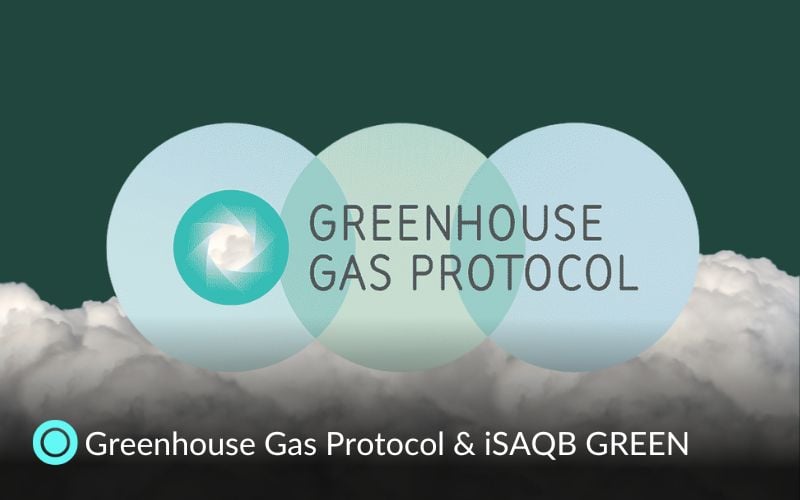The Greenhouse Gas (GHG) Protocol
Greenhouse Gas Protocol is a global guideline for the measurement and management of greenhouse gas emissions. Established by WRI and WBCSD in 1998 the mission of this framework is the development of internationally accepted standards for greenhouse gas accounting and reporting through an open and inclusive process.
Aims and Objectives:
-
Standardization: The GHG Protocol provides comprehensive global standardized frameworks to measure and manage greenhouse gas emissions from private and public sector operations, value chains, and mitigation actions.
-
Transparency: Thus guidelines allow there to be clear guidelines, hence assuring consistent reporting of GHG emissions across organizations.
-
Actionable Data: It offers the world's most commonly used accounting standards and guidance regarding greenhouse gases. This helps entities to create a strategy for proper management and decrease in emissions.
Reason Behind Its Establishment
The GHG Protocol was developed in response to the need for a standardized method to account for and report greenhouse gas emissions. This standardization is crucial for tracking progress toward climate goals and ensuring that efforts to reduce emissions are effective and comparable across different sectors and regions.
In 2023, 97% of disclosing S&P 500 companies reported to CDP using GHG Protocol. - ghgprotocol.org
Related Resource:
European Climate Pact - GHG Protocol
Connection Between GHG Protocol and Sustainable IT
The GHG Protocol's frameworks play a fundamental role in facilitating the promotion of sustainable IT practices. Since it provides a framework for standard measurements and emissions management, it becomes easier for companies operating in the IT sector to analyze the level of environmental effects resulting from the data centers and manufacturing of the hardware. From here, the journey towards the actual reduction of energy consumption and emission begins in an effort toward meeting the overarching goal of sustainability.
In a nutshell, the GHG Protocol acts as a basis for any organization that is willing to know and reduce its greenhouse gas emissions; thus it has played an important role in the global effort against climate change.
What are the 5 principles of the GHG Protocol?
The GHG Protocol is based on five simple principles that underpin any proper, consistent, and meaningful GHG accounting and reporting. These five allow for the development and application of the said guiding standards:
1. Relevance
Definition: The GHG inventory must truly represent the organization's emissions and be able to meet the needs of its users in terms of decisions to be taken.
Purpose: This principle ensures that the inventory includes all significant emissions sources and aligns with the organization’s goals.
2. Completeness
Definition: Account for and report all GHG emissions within the chosen boundary. All exclusions must be clearly disclosed and justified.
Purpose: Provides a full picture of emissions to avoid omitting critical data.
3. Consistency
Definition: Use consistent methodologies to enable meaningful comparisons of emissions over time. If methodologies change, disclose and justify these changes.
Purpose: Ensures reliability of data for trend analysis and comparison.
4. Transparency
Definition: Disclose all relevant assumptions, methodologies and data sources clearly and openly. Allow for external verification if needed.
Purpose: Promotes trust and understanding by providing sufficient detail about the accounting process.
5. Accuracy
Definition: Ensure that GHG emissions estimates are as accurate as possible with uncertainties minimized. Avoid systematic over or underestimation.
Purpose: Provides confidence that reported data is credible and precise enough for decision-making.
These principles are crafted to produce dependable and useful inventories of greenhouse gas emissions capable of driving meaningful actions toward reducing their emissions. In this regard, they form the foundation of all GHG Protocol standards while ensuring that all organizations' reports on their respective GHG profiles are credible and actionable.
What are the 7 standards of the GHG Protocol?
The Greenhouse Gas (GHG) Protocol has developed several standards to assist organizations in measuring and managing their greenhouse gas emissions. The seven key standards are:
1- Corporate Standard
2- Corporate Value Chain (Scope 3) Standard
3- Product Standard
4- Policy and Action Standard
5- GHG Mitigation Goal Standard
6- GHG Protocol for Cities (Global Protocol for Community-Scale Greenhouse Gas Emission Inventories - GPC)
7- Project Protocol
8- Additional Guidance:
While the above are the main standards, the GHG Protocol also offers specialized guidance, including GHG emission scopes:
-
GHG Scope 2 Guidance: Focused on emissions from purchased electricity, heat, steam, and cooling.
-
GHG Scope 3 Calculation Guidance: Supports the Scope 3 Standard with detailed calculation methods.
-
Land Sector and Removals Guidance: Covers emissions from land use, land-use change, and bioenergy.
-
Agricultural Guidance: A supplement to the Corporate Standard, focusing on GHG emissions from the agricultural sector.
The 7 main standards of the GHG Protocol are primarily targeted at helping organizations, cities, and governments systematically measure and manage greenhouse gas emissions. The additional guidance documents, such as for Scope 2 and agriculture, provide in-depth support for specific sectors or emission types. This comprehensive framework supports global sustainability and climate change mitigation goals.
Standards of the GHG Protocol & Sustainable IT
The Corporate Value Chain (Scope 3) Standard and the GHG Protocol Scope 2 Guidance from the GHG Protocol are particularly relevant to sustainable IT.Here's how they connect:
1. Corporate Value Chain (Scope 3) Standard
Connection to IT: Scope 3 includes indirect emissions occurring in an organization’s value chain, such as those from the production and use of IT hardware, software, and services.
Relevance: IT supply chains (manufacturing of servers, laptops, and other devices) are a significant contributor to Scope 3 emissions. Sustainable IT practices, such as extending the lifespan of devices, optimizing software to consume less power, and sourcing from environmentally conscious vendors, can reduce these emissions.
2. Scope 2 Guidance
Connection to IT: Covers greenhouse gas emissions from purchased electricity, steam, heating, and cooling, otherwise known as Scope 2 emissions. This is directly related to the operations of IT including data centers and office IT infrastructure.
Relevance: Data centres that host cloud services are also very power-intensive. The measurement and management of their power usage correspond to Scope 2 guidance.
It reduces Scope 2 emissions since renewable energy sources or energy-efficient cooling systems can be implemented.
Why Sustainable IT Is Relevant to the GHG Protocol:
Sustainable IT practices aim to minimize energy use and emissions across the IT lifecycle, aligning with the GHG Protocol’s goals of measuring and managing GHG emissions comprehensively. By following these standards, organizations can:
-
Identify high-impact areas in their IT systems.
-
Optimize energy usage.
-
Transition to greener technologies, contributing to overall climate goals.
Example: A company implementing a cloud migration strategy can use the Scope 2 Guidance to measure emissions from their data centers and the Scope 3 Standard to assess emissions from cloud service providers. This comprehensive approach ensures IT operations align with sustainability goals.
The relationship between the GHG Protocol and the iSAQB GREEN module
Greenhouse Gas (GHG) Protocol: This is the globally recognized framework that measures and manages the energy performance of greenhouses gases. This gives the standards and tools to businesses and governments for the quantification and reporting of corporate GHG emissions.
The iSAQB GREEN module-"Green Software: Development of Resource-Efficient Applications"-is intended for software architects seeking to create resource-efficient and environmentally friendly IT systems. This curriculum places significant emphasis on awareness of the contribution of IT to climate protection, while also covering present regulations and making clear where measures need to be taken by an enterprise.
The relationship between the GHG Protocol and the iSAQB GREEN module is obvious from their shared objectives:
Standardized Emission Measurement
The GHG Protocol gives a framework for organizations to account for and report their GHG emissions. Similarly, the GREEN module teaches the software architect how to measure and monitor CO₂ emissions and energy consumption inside the IT system.
Regulatory Awareness
It can be observed that the regulatory awareness, which is being underlined by GHG Protocol as well as the GREEN module, plays an important role in understanding the rules and regulations for the emission of the GHGs. The existing regulations and their impact on the companies are addressed by the GREEN module, which is aligning in the direction of GHG Protocol in order to standardize the reporting.
Sustainability in IT
While the GHG Protocol provides a broad framework for various sectors, the GREEN module takes a close look at the contributions of the IT industry toward a reduction in emission. It sensitizes software architects to design software architectures that consume less energy, aligning with broader goals set out by the GHG Protocol.In summary, the iSAQB GREEN module completes the GHG Protocol by applying its principles specifically to software architecture, promoting the development of resource-efficient applications that align with global emission reduction standards.
Related Resource:
Curriculum Module GREEN – Green Software – Development of Resource-Efficient Applications





